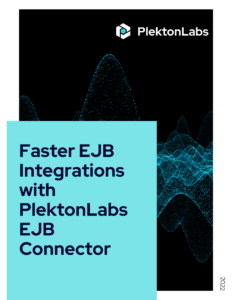In an era of digital transformation, data makes the world go round. Businesses rely on integration and need APIs to function smoothly. All this dependence on technology simply means that data-driven decisions are vital to almost every organization under the sun.
While the world has grasped the importance of data, not everyone can make use of this data to manipulate their business in the right direction. Using data to influence the major decisions in business can boost profits and take your revenue to the next level.
How can this be done? Well, to put it simply, you need to view your organization’s Key Performance Indicator (KPI) through a data-oriented lens and use the data to give your KPI a nudge in the right direction.
Designing a Data-Driven Organization: What You Need to Consider
Data-driven enterprises think about where they are, decide where they want to go, and how they want to get there. To make sure they progress steadily, they establish KPIs to monitor the success of business operations, departments, projects, employees, and initiatives.
Very often, these organizations also set up a panel of decision-makers who collectively ensure that business aims, company practices, and technology implementations are in tandem and going according to plan.
In other words, you have to think about long-term goals before every business decision you make. Look at the big picture, and figure out where you want to be 5 years down the line.
Utilizing KPI Dashboards for decision-making may be the most important thing you need to truly become a data-driven organization. Why? The different branches or components of your business need to understand business goals and KPIs and their connection with each other.
Instead of locking data away in silos, use APIs to allow the departments of your organization to understand what is happening and how they can do what is best for the company in the long run.
This will also help the business prioritize its actions at any given time and make sure that every decision made is backed by the data. Furthermore, it will allow the technical and business components of the business to work together with no friction.
Furthermore, all dashboards and the metrics within them can be a double-edged sword. They might lead to affordances that speed up orientation and decision-making. Or you might end up with dissonances that make it harder and take longer to decide on what to do and implement the choices that do end up being made.
A simple but effective method to create affordance and decrease dissonance is to utilize frames of reference that the audience of your dashboards is already familiar with. Also, when you extend an existing frame of reference it lets new dashboard users orient themselves to the new frame of reference more easily.
As you go through all this, try to avoid manual reporting whenever possible. If you have to manually report your KPI stats, you’re better off without it altogether. This is because it incurs a lot of unnecessary costs and can be pretty time-consuming. Automated KPI collection, management, and tracking are a vital part of speed and agility. Because of this, avoid relying on manual KPI reporting as much as possible.
At the end of the day, KPIs are meant to help people make informed decisions about their business. They don’t have much intrinsic value, but their value is derived from the decisions based on them. When coming up with a KPI formulation you need to determine two factors.
Firstly, who is making the actual decision? Equally important is the level of precision they need to make a good decision. Basing your KPI formulation on the answers to these two points can help improve the directional accuracy when making important choices.
Final Thoughts
Growing your KPI system is a great way to keep improving the metrics of your business. And to do so you can easily make your API ecosystem flourish with several MuleSoft services. So, if you want to get ahead in the big game, keep an eye on the data and watch your business reach heights you never imagined before.




